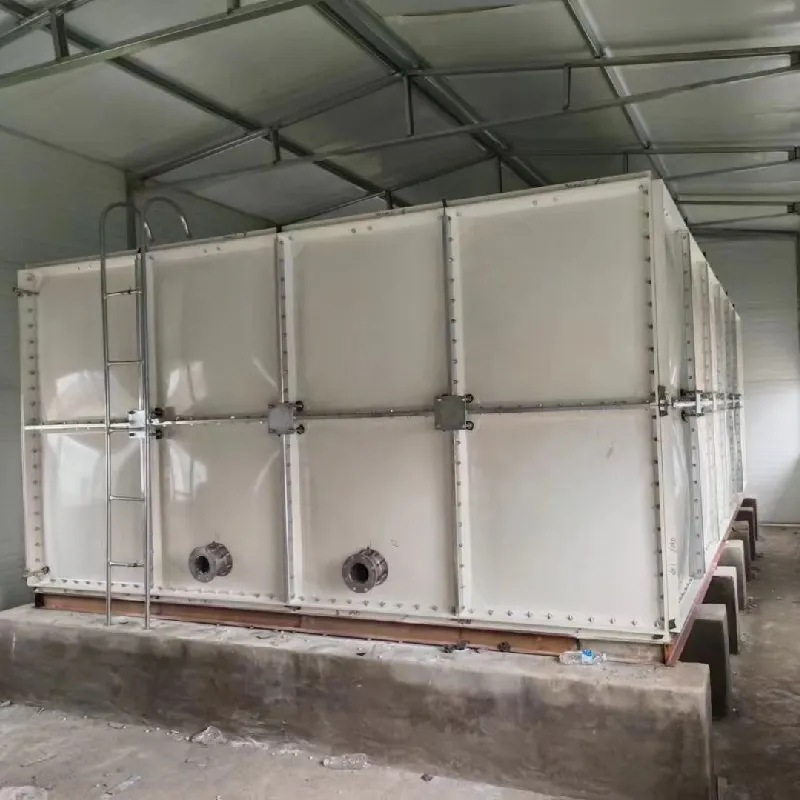loading...
- No. 9, Xingyuan South Street, Dongwaihuan Road, Zaoqiang County, Hengshui, Hebei, China
- admin@zjcomposites.com
- +86 15097380338
- Welcome to visit our website!
High-Efficiency FRP Sand Filter Vessel for Water Treatment Applications
Understanding FRP Sand Filter Vessels
In the realm of water treatment and filtration systems, FRP (Fiber Reinforced Plastic) sand filter vessels have emerged as a preferred choice due to their numerous advantages over traditional materials. These vessels are pivotal in various applications ranging from swimming pool filtration to municipal water treatment, enabling efficient removal of impurities and ensuring clean, safe water for use. In this article, we will delve into the composition, benefits, applications, and maintenance aspects of FRP sand filter vessels.
Composition and Structure
FRP sand filter vessels are constructed from a matrix of reinforced plastic and fiberglass, which provides durability and strength while remaining lightweight. The design typically consists of a cylindrical body with an inlet and outlet for water flow, and layers of sand or other filtration media inside. The outer layer is often coated with a UV-resistant resin to protect against environmental factors, enhancing its longevity. The use of advanced materials minimizes corrosion, a common issue with traditional metal vessels, ensuring a longer operational life.
Advantages of FRP Sand Filter Vessels
1. Corrosion Resistance One of the primary benefits of FRP is its resistance to corrosive chemicals. Unlike steel or concrete, FRP does not rust or degrade when exposed to harsh substances, making it ideal for water treatment processes that involve various chemicals.
2. Lightweight Weighing considerably less than metal or concrete alternatives, FRP sand filter vessels are easier to transport and install. This lightweight property reduces overall project costs, especially in terms of labor and logistics.
3. High Strength-to-Weight Ratio Despite being lightweight, FRP offers incredible strength. It can withstand high pressures and impacts, ensuring structural integrity even in demanding environments.
4. Customizable Design FRP filter vessels can be produced in various shapes and sizes to meet specific project requirements. This flexibility allows for tailored solutions in diverse applications, enhancing performance and efficiency.
5. Cost-Effectiveness Although the initial investment might be slightly higher, the durability and low maintenance requirements of FRP filter vessels often lead to long-term savings. Their resistance to corrosion means reduced replacement costs, and their lightweight nature often translates into lower installation expenses.
frp sand filter vessel

Applications of FRP Sand Filter Vessels
FRP sand filter vessels find utility in a wide array of applications. Here are some of the most common
1. Municipal Water Treatment They are integral to municipal water treatment plants, where they help in the removal of sediments and particulates before water is distributed to households.
2. Industrial Filtration Industries such as food and beverage, pharmaceuticals, and manufacturing employ FRP sand filter vessels to ensure the purity of process water and to meet stringent regulatory standards.
3. Aquatic Facilities Swimming pools, aquariums, and spas utilize FRP filters for recirculating water to keep it clean and hygienic for users, demonstrating their applicability in recreational facilities.
4. Irrigation Systems In agriculture, these vessels play a crucial role in filtering water for irrigation, thus promoting sustainable practices by ensuring that crops receive clean water without harmful impurities.
Maintenance of FRP Sand Filter Vessels
Maintaining FRP sand filter vessels is relatively straightforward, yet crucial for optimal performance. Regular inspections should be conducted to check for any signs of wear or damage. It is also important to monitor the filtration media, as it may require periodic backwashing or replacement, depending on usage and the quality of incoming water. Adhering to a routine maintenance schedule not only extends the lifespan of the vessels but also ensures consistent filtration efficacy.
Conclusion
FRP sand filter vessels represent a significant advancement in water treatment technologies. With their unique advantages, extensive applications, and relative ease of maintenance, they have solidified their place in modern filtration systems. As the demand for clean water continues to rise globally, the importance of efficient and durable filtration solutions like FRP cannot be overstated. Investing in such technologies contributes not only to enhanced water quality but also to the sustainability of our water resources.
-
The Rise of FRP Profiles: Strong, Lightweight, and Built to LastNewsJul.14,2025
-
SMC Panel Tanks: A Modern Water Storage Solution for All EnvironmentsNewsJul.14,2025
-
GRP Grating: A Modern Solution for Safe and Durable Access SystemsNewsJul.14,2025
-
Galvanized Steel Water Tanks: Durable, Reliable, and Ready for UseNewsJul.14,2025
-
FRP Mini Mesh Grating: The Safer, Smarter Flooring SolutionNewsJul.14,2025
-
Exploring FRP Vessels: Durable Solutions for Modern Fluid HandlingNewsJul.14,2025
-
GRP Structures: The Future of Lightweight, High-Performance EngineeringNewsJun.20,2025
